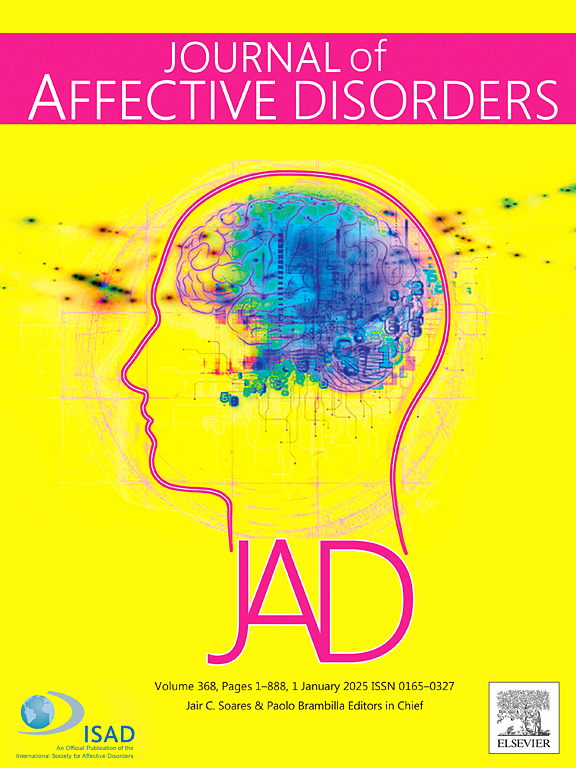Validity and feasibility of the oxford mental illness suicide tool (OxMIS): A mini-review and meta-analysis
IF 4.9
2区 医学
Q1 CLINICAL NEUROLOGY
引用次数: 0
Abstract
Background
Individuals with severe mental illness are at a greater risk of suicide than the general population. Therefore, a concerted effort has been made to create increasingly precise and reliable tools over the last decade. Among these tools, in 2019 the Oxford Mental Illness and Suicide Tool (OxMIS) was developed to estimate the probability of suicide risk within 12 months for individuals diagnosed with bipolar disorder or schizophrenia spectrum disorder. Therefore, in this review, we aimed to synthesise the peer-reviewed literature collected on the OxMIS tool.
Methods
A systematic literature search was conducted using the databases PubMed, PsycINFO, Scopus, and Web of Science, resulting in the identification of 129 records. After removing duplicates and conducting an in-depth review of the full texts, 5 articles were included in the mini-review. Additionally, a fixed-effects model was employed to calculate the pooled effect size from 2 studies using Comprehensive Meta-Analysis (CMA) 3.7 software.
Results
The OxMIS tool was found to be clinically feasible and to lead to an average cost-saving of approximately £300 per assessed patient as well as a marginal improvement in quality-adjusted life years. Furthermore, the OxMIS tool achieved good discrimination accuracy in terms of sensitivity and specificity in a Swedish and Finnish validation sample. The overall pooled odd ratio (OR) was 3.416 [95 % CI: 3.092–3.774].
Limitations
The first limitation pertains to the scarcity of studies on OxMIS, which necessitates a degree of caution in interpreting the results. Moreover, although the reviewed studies analyzed different aspects of the use of OxMIS, the differences in objectives and research designs limited a comprehensive comparison of the results between the included studies. Finally, the discrepancy in the prevalence of high suicide risk among patients of different study populations requires further investigation in future studies.
Conclusion
From the reviewed studies emerged that OxMIS is a novel and promising web-based tool that is capable of estimating the suicide risk of patients with serious mental illnesses. Nevertheless, further external validation studies are required to confirm its clinical utility across different study populations.
求助全文
约1分钟内获得全文
求助全文
来源期刊

Journal of affective disorders
医学-精神病学
CiteScore
10.90
自引率
6.10%
发文量
1319
审稿时长
9.3 weeks
期刊介绍:
The Journal of Affective Disorders publishes papers concerned with affective disorders in the widest sense: depression, mania, mood spectrum, emotions and personality, anxiety and stress. It is interdisciplinary and aims to bring together different approaches for a diverse readership. Top quality papers will be accepted dealing with any aspect of affective disorders, including neuroimaging, cognitive neurosciences, genetics, molecular biology, experimental and clinical neurosciences, pharmacology, neuroimmunoendocrinology, intervention and treatment trials.
 求助内容:
求助内容: 应助结果提醒方式:
应助结果提醒方式:


